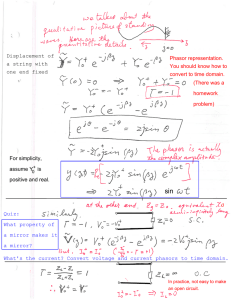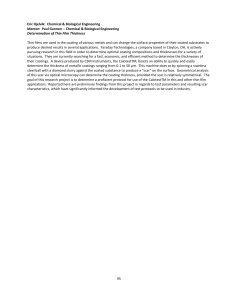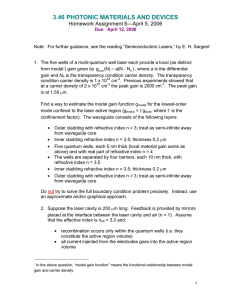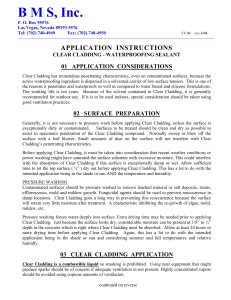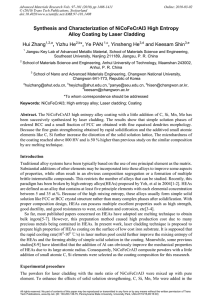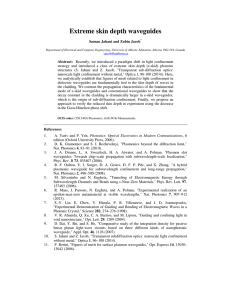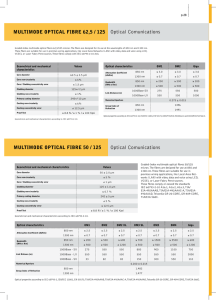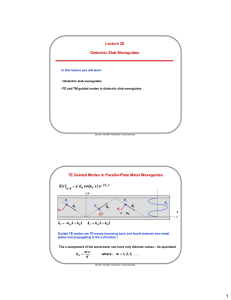3.46 PHOTONIC MATERIALS AND DEVICES Homework Assignment 3—February 22, 2006
advertisement
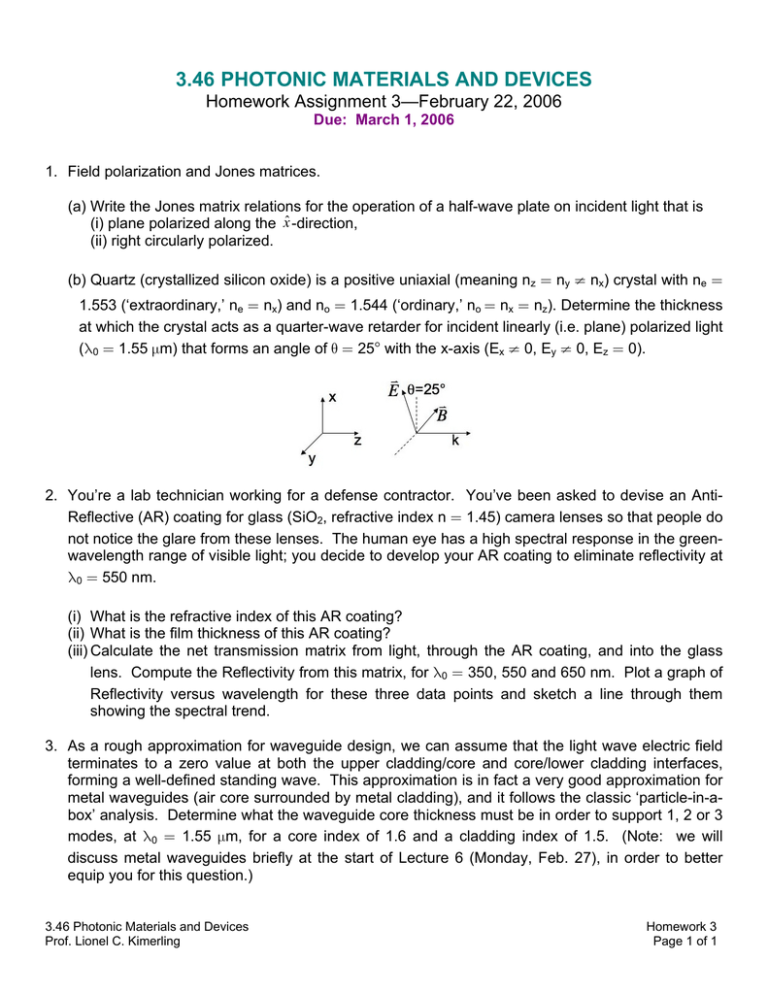
3.46 PHOTONIC MATERIALS AND DEVICES Homework Assignment 3—February 22, 2006 Due: March 1, 2006 1. Field polarization and Jones matrices. (a) Write the Jones matrix relations for the operation of a half-wave plate on incident light that is (i) plane polarized along the x̂ -direction, (ii) right circularly polarized. (b) Quartz (crystallized silicon oxide) is a positive uniaxial (meaning nz = ny ≠ nx) crystal with ne = 1.553 (‘extraordinary,’ ne = nx) and no = 1.544 (‘ordinary,’ no = nx = nz). Determine the thickness at which the crystal acts as a quarter-wave retarder for incident linearly (i.e. plane) polarized light (λ0 = 1.55 μm) that forms an angle of θ = 25° with the x-axis (Ex ≠ 0, Ey ≠ 0, Ez = 0). 2. You’re a lab technician working for a defense contractor. Y ou’ve been asked to devise an AntiReflective (AR) coating for glass (SiO2, refractive index n = 1.45) camera lenses so that people do not notice the glare from these lenses. The human eye has a high spectral response in the greenwavelength range of visible light; you decide to develop your AR coating to eliminate reflectivity at λ0 = 550 nm. (i) What is the refractive index of this AR coating? (ii) What is the film thickness of this AR coating? (iii) Calculate the net transmission matrix from light, through the AR coating, and into the glass lens. Compute the Reflectivity from this matrix, for λ0 = 350, 550 and 650 nm. Plot a graph of Reflectivity versus wavelength for these three data points and sketch a line through them showing the spectral trend. 3. As a rough approximation for waveguide design, we can assume that the light wave electric field terminates to a zero value at both the upper cladding/core and core/lower cladding interfaces, forming a well-defined standing wave. This approximation is in fact a very good approximation for metal waveguides (air core surrounded by metal cladding), and it follows the classic ‘particle-in-abox’ analysis. Determine what the waveguide core thickness must be in order to support 1, 2 or 3 modes, at λ0 = 1.55 μm, for a core index of 1.6 and a cladding index of 1.5. (Note: we will discuss metal waveguides briefly at the start of Lecture 6 (Monday, Feb. 27), in order to better equip you for this question.) 3.46 Photonic Materials and Devices Prof. Lionel C. Kimerling Homework 3 Page 1 of 1


